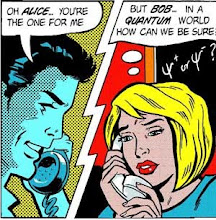Jun 5, 2008
An international team of physicists has entangled three diamond nuclei for the first time. The development promotes solid-state systems to a rank of quantum systems including ions and photons that have achieved entanglement for more than two particles.
Entanglement lies at the heart of fields such as quantum computation and quantum teleportation. At its most basic level, if two particles are entangled a measurement of the state of one reveals something about the state of the other, regardless of the distance separating them.
But entanglement is difficult to achieve. It requires quantum states to be manipulated while preventing them from interacting with their environment, which tends to degrade the quantum system into a classical state. Physicists have had some successes, having entangled up to eight calcium ions and up to five photons. So far, however, solid state systems have proved trickier.
Now, a team led by Jöerg Wrachtrup of the University of Stuttgart, Germany, has demonstrated that two or three diamond nuclei can be entangled (Science 320 1326). “If we compare the quality of entanglement in our experiments with those [of ions and photons], our results compare favourably,” says Wrachtrup. His team includes researchers from the University of Tsukuba, the National Institute of Advanced Industrial Science and Technology, and the Nanotechnology Research Institute, Japan, and Texas A&M University, US.
Method ‘not new’
The researchers’ system is a piece of synthetic diamond containing a large proportion of carbon-13 isotopes. At one point in the lattice they place a nitrogen atom, which leaves a defect containing a single electron.
Because this electron interacts with the neighbouring carbon nuclei, Wrachtrup’s team can shine laser light onto it to put some of the nuclei into a certain quantum state. Then, by applying radio-frequency pulses of a magnetic field, they can drive the spin of the nuclei so that they become entangled with one another.
“The method itself is not new,” says Wrachtrup, who adds that equivalent magnetic pulses are also used in nuclear magnetic resonance (NMR) spectroscopy. “It is the system itself which we discovered to be addressable as a single quantum system almost a decade ago. Meanwhile we can engineer this defect to such a degree that we do have excellent control.”
Diamond nuclei are an attractive option as a quantum system for computation. They can be kept in a coherent state for a long time and are easier to control than other systems, which will become vital for minimizing errors. However, because they currently have to be manipulated using the defect electron as an intermediary, it might be difficult to entangle many of them. Wrachtrup says that his team are working on scaling-up their system now, and believes in the future they should be able to control up to five or six nuclei per electron spin.
About the author
Jon Cartwright is a reporter for physicsworld.com
Source
Narratives and Past Experience
2 days ago






No comments:
Post a Comment